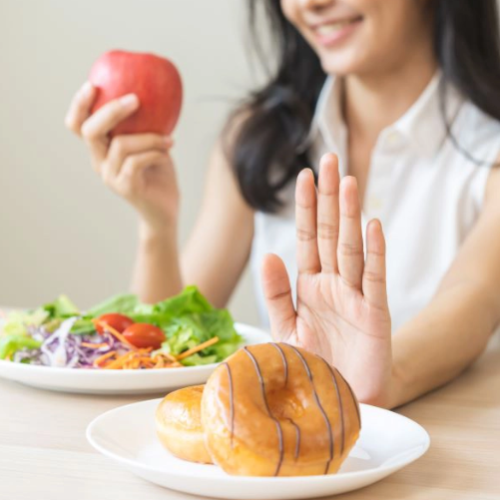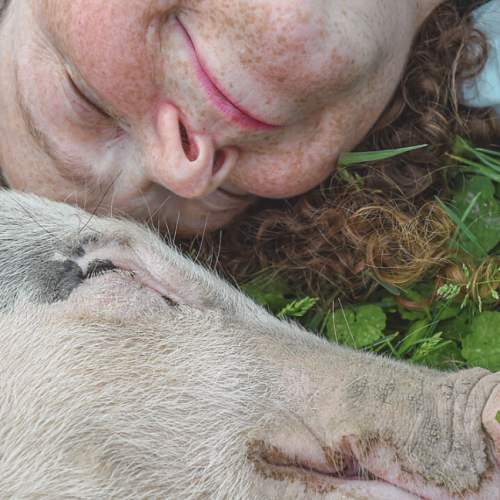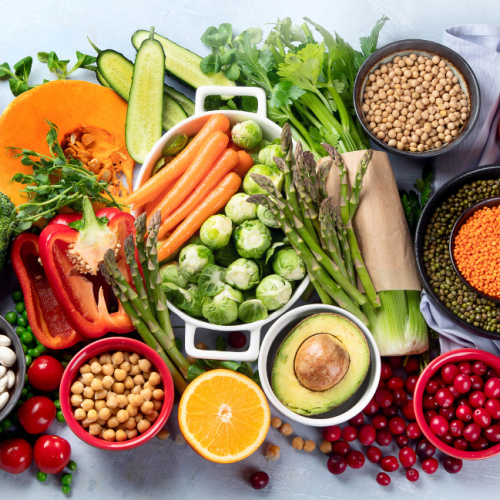Don't throw it away! How you can help with the food waste epidemic
Georgia Brogan for No Meat May
Food wastage is a huge global problem, and most concerning, a practice that has become normalised. Many of us have made a habit of buying more food than we need, letting food spoil, or buying larger portions than we can eat.
But the problem of food waste is much bigger than just wasting food.
It's also a massive waste of the precious resources that go into producing, transporting and processing food items. Ultimately, wasting food equals more greenhouse gas emissions, intensifying climate change impacts.

The issue is worldwide. The United Nations Food and Agriculture Organization found that 14 percent of all food produced globally is lost before it even gets to our retail shelves. And a further 17% is wasted by retailers and consumers.
That means almost a third of all food produced is never eaten!
Food loss from harvest to retail shelves is out of our control, but we can take action to reduce food waste by changing our everyday habits.
Being a mindful consumer means acknowledging the extensive processes of food production, and the implications this has on the environment and food availability.
Here are some of No Meat May’s tips on how you can help reduce food waste:

Here are some of No Meat May’s tips on how you can help reduce food waste:
1. Buy only what you need
- Planning and mindful shopping are two key methods to help with this.
- We recommend making a list with your weekly meals in mind.
- Buy fresh ingredients in smaller quantities - reduced risk of waste and fresher food!
2. Love your leftovers!
- Restore wilted celery and green vegetables by soaking them in iced water for a few minutes.
- Bake leftover vegetables into a quiche, or add to fried rice or a curry.
- Make breadcrumbs or croutons from stale bread.
- More amazing tips and tricks can be found at Love Food Hate Waste.
3. Pick 'imperfect' fruit & veg
- See the beauty in ‘ugly’ and wonky fruit and vegetables. It is time to embrace the strangely-bent carrots and slightly lumpy potatoes.
- A huge amount of produce is wasted each year on cosmetic grounds (up to 25% of all vegetables are wasted because they are too oddly shaped for the grocery store).

4. Store food wisely
- Store dry goods in air-tight containers to avoid moisture and weevils.
- Freeze leftovers, or food that may go off soon.
- Don’t store all fruit and veg in the fridge - some products go off quicker (tomatoes, potatoes and sweet potatoes, pumpkin and banana all benefit from being left out).
- Wrap herbs in damp paper towelling and store in sealed containers to preserve them effectively.
5. Understand food labelling
- Know the difference between ‘best before’ and ‘use by’.
- ‘Best before’ food items are still safe to eat after the date has passed, they just may have lost some quality. Misinterpretation of ‘best before’ contributes to unnecessary waste, with consumers throwing out food that is still perfectly edible (eg. apples, bananas, cucumbers and broccoli).
- The ‘Use by’ date alerts us to when food is no longer safe to eat.
6. If your waste comes from over cooking - try smaller portions
- Plan portions before cooking.
- Use smaller plates and dishes.
- Choose a smaller shopping cart.
- Carefully consider whether to buy in bulk.

7. Compost food scraps
Why compost?
- Your scraps are delicious food for your plants. Yum yum!
- It reduces your home’s weekly waste production.
- It reduces your home’s carbon footprint.
Food Factoid: When kitchen scraps are thrown into a plastic bag and sent to landfill, it releases methane - a much more potent greenhouse gas than carbon dioxide!
How to compost
- Gather organic food scraps (no animal products or oils can be composted) - These scraps are high in nitrogen.
- Mix the organic scraps with materials with a high carbon content - i.e. straw, hay, wood chips, sawdust, dead leaves, shredded paper, cardboard.
8. Donate your excess food
-
Donate to charities and food banks near you to reduce your household waste, food in landfill and most importantly, support people in need in the community.
9. Challenge yourself!
No Meat May is such a great way to learn how to incorporate more sustainable plant-rich meals, but there is so much more we can and must do to protect our natural world. Why not challenge yourself to a zero waste month where the goal is to not throw away any food? It's a real eye opener and a great way to help change things up. You in?











2 Comments
You can see how much this is in live on live-counter.com:
https://live-counter.com/food-waste/
Really crazy, in a world where the number of starving children is rising again, we have to stop this!